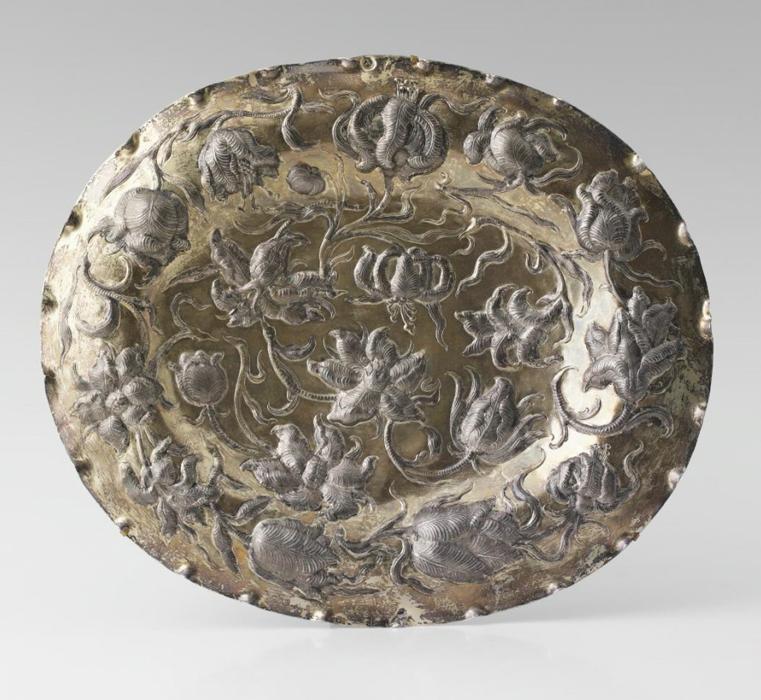SHOWCASE 6
Close The showcase displays works of German goldsmiths. Their creations came to the Russian Royal Treasury from ambassadorial gifts or specially purchased for the Kremlin treasury.
The showcase displays works of German goldsmiths. Their creations came to the Russian Royal Treasury from ambassadorial gifts or specially purchased for the Kremlin treasury.
In the 16th - the first half of the 17th century, the city of Nuremberg in southern Germany was the main centre of European artistic silver production. The art of Nuremberg craftsmen has consistently and vividly depicted itself in the creation of wine vessels - from small, slightly larger glasses, to giants above a meter. In the style of its time, the products are carefully gilded, abound in scenes, ornamental decoration and relief images. Works of Hamburg silversmiths reveal a commitment to new forms and design techniques, an active attitude to artistic discoveries of domestic and foreign colleagues. Hamburg masters quickly mastered the type of Nuremberg Late Renaissance standing cup and Augsburg decorative dish, which organically entered into their creative fund. Hamburgers were fluent in a variety of ornaments and developed their original interpretations of the Dutch auricular-shaped ornament "knorpel" and floral decor. Of all the centres of German artistic silver, it was only in Hamburg during the baroque period that the art of silver engraving developed so significantly.
The second half of the 17th - the beginning of the 18th century is the time of the highest heyday of Augsburg goldsmiths' art. The pieces of the collection, striking with their lush elegance and high craftsmanship, are made in the pronounced Baroque style. They are characterized by underlined decorative effect, intense dynamism of forms, high embossed reliefs, which create a picturesque play of light and shade on the surface of products. Floral motifs such as large bundles of fruits and vegetables, lush flowers, acanthus leaves and auricular-shaped "knorpel" ornamental variations prevail in the design of creations. The peculiarity of art pieces of Augsburg at that time consisted in the development of silver plastic art.





















